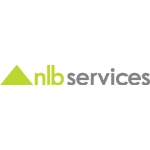© 2025 Next Level Business Services Inc. All Rights Reserved.
Signs of Low Employee Morale and How to Meet the Challenge
By NLB Services
Employee morale refers to the overall level of job satisfaction and happiness experienced by employees in a workplace. It is a crucial factor in determining an organization’s success as it influences productivity, employee turnover rates, and customer satisfaction levels. High employee morale tends them to do good work, and keep other teammates motivated, engaged, and loyal. Higher job satisfaction results in higher productivity. On the other hand, low morale can lead to absenteeism and low productivity. Organizations must create a positive work environment to boost employee morale through recognition, clear communication, growth opportunities, and a supportive culture.
What is employee morale?
Employee morale is the overall outlook and attitude of employees toward their jobs, work environment, and the organization. It is an important aspect of employee engagement and job satisfaction that impacts the company’s reputation and retention capacity and impacts overall business success. Highly motivated employees typically are satisfied in their job and are loyal to the company. They perform well and help in increasing productivity. In contrast, a low-morale employee can impact business with decreased productivity. Therefore, it is important for organizations to create a positive work environment and address concerns and factors that impact employees’ morale.
What is low morale at work and what are its causes?
Low morale at work refers to the situation where employees are dissatisfied, disengaged, and demotivated, resulting in decreased productivity, increased absenteeism, and high employee turnover rates.
There can be several reasons that can cause low morale at work, including:
- Poor communication
- Lack of feedback from management or only destructive feedback on the work done
- Fewer growth opportunities
- Unfair treatment, biases, and favoritism in the workplace
- Overwork, underpaying
- Lack of work-life balance
- Overtime (unnecessarily)
- Negative workplace culture
- No recognition or appreciation
- Unrealistic job expectations
Addressing these issues through regular communication, training, recognition, and support can help improve employee morale and create a positive work environment.
A negative workplace culture can cause negativity and low morale for employees. Companies should work on that.
How does low morale affect the workplace?
Low self-esteem and morale at the workplace can impact the organization’s overall success significantly. But the question is, what generates negativity and low morale in employees?
When employees are disengaged and demotivated, it can lead to dissatisfaction in their jobs and:
- Poor job performance & Decreased productivity
- Increased absenteeism and turnover rates
- Poor customer service and low customer satisfaction
- Increased workplace accidents and errors
- Negative impact on team dynamics and collaboration
- Reduced creativity, and innovation
Poor organizational reputation and difficulty in attracting and retaining top talent.
These factors can ultimately result in lower profitability, decreased market share, and reduced competitiveness. Therefore, it is essential for organizations to prioritize creating a positive work environment and find fun ways to boost morale at work that fosters employee engagement, job satisfaction, and productivity.
What are the signs of low morale?
Low or reduced productivity
A situation where employees do not perform at their optimal level is called low productivity/reduced productivity. It results in a decreased amount of work being done. Factors of low productivity can be poor morale, lack of motivation, burnout, poor management, inadequate training, insufficient resources, etc. When employees are not productive, it can impact the organization’s bottom line negatively. Any company’s overall success and reputation depend on productivity. Low productivity at work can lead the company to increased costs, and meager customer satisfaction. Organizations must identify the reason behind low productivity and find out methods to foster a positive work environment.
A negative attitude towards work or company
A negative attitude in the workplace can be a sign of low productivity. It can impact an employee’s motivation and overall job performance. When employees work with a negative attitude in a company, they might not be fully committed to their work. Their unwillingness can impact work culture and take the company toward decline. It can lead them to miss deadlines, have low self-esteem (on a personal level), poor-quality work, and slow productivity. A negative attitude can also affect team dynamics which leads to a toxic work environment, reduced collaboration, and poor communication. Therefore, organizations need to address any negative attitudes in the workplace and encourage a positive work culture that fosters employee engagement, motivation, and job satisfaction.
Poor work performance and quality
When employees fail to meet the expected standards of work and produce work that is below the required quality level then it is referred to as poor work performance and quality. It can be caused by factors like lack of motivation, poor work environment, inadequate training, low morale, or unclear job expectations. Poor work performance and quality can lead to negative consequences for the company as well as the individual’s mind. It can impact a company in various ways like missed deadlines, reduced productivity, increased costs, etc. Hence, organizations need to provide adequate training and set clear job expectations for the employees working in the company. Additionally, providing a positive work environment can help boost their morale and promotes employee engagement and job satisfaction among employees. Regular performance evaluations and feedback can help employees identify the areas for improvement and help them in their growth and development.
How to improve staff morale?
Improving staff morale is essential to creating a positive work environment that fosters employee engagement, job satisfaction, and productivity. Here are some tips to instantly boost employee morale:
- Regularly recognizing and rewarding employee contributions
- Providing opportunities for growth and career advancement
- Encouraging open and transparent communication
- Creating a positive workplace culture that values respect and inclusivity
- Encouraging work-life balance and flexibility
- Providing fair compensation and benefits packages
- Offering training and development opportunities to enhance employee skills
- Promoting teamwork and collaboration among employees
- Providing regular feedback and performance evaluations
Encouraging social activities and events to build team morale and relationships.
By implementing these strategies, organizations can improve staff morale and create a positive work environment that benefits both employees and the organization as a whole.
Stop Micromanaging
Micromanagement makes people uncomfortable. Micromanagement is the way of closely monitoring and controlling the way employees work. It can lead to frustration and self-doubt and can lead to decreased productivity. Micromanagement leads to dissatisfaction among employees.
To avoid micromanagement, managers should work around:
- Building trust: Develop trust with colleagues by delegating tasks and showing confidence in their abilities.
- Give clear instructions about work and deadlines well in advance: Provide clear expectations and guidelines for work projects, but allow employees to take ownership of the work. Don’t hover over their work while it is in process. But, be available to clear their doubts.
- Encourage autonomy: so that employees can take the initiative and make decisions independently.
Improve Work-Life Balance
Improving work-life balance is paramount in the era of remote work. For the maximum job satisfaction and well-being of employees, developing a stress-free work environment is very important. It can not only provide job satisfaction among employees but also can include a sense of fulfillment at the work front.
Here are some ways to improve work-life balance:
- Set boundaries and bifurcate the work-
Encourage employees to set some boundaries between work and personal life by setting up a time for work hours and strictly adhering to them.
- Offer flexibility – There needs to be flexibility in work and life. Give your employees flexible work arrangements such as remote work or flexible schedules to manage time for both- office and personal life.
- Encourage breaks: All work and no play make Jack a dull boy. Encourage employees to take breaks during the workday to recharge and refresh.
Confusion and unclear expectations
Reporting managers should make a point to set clear expectations in the beginning of the job otherwise, it will only create unnecessary confusion in employees’ minds and result in poor outcomes.
Practice recognition
For every employee who does a commendable job should be given special recognition by appreciating his/her work at the workplace. It will help to boost their morale as well as will also motivate other employees to perform better.
Conclusion
It’s important for superior and reporting managers to monitor employees’ morale in the workplace. Addressing problems at the workplace effectively helps workers maintain a positive outlook for the company and remain productive at the workplace. Companies’ giving attention to buoying employee morale can help fortify relationships with staff and improve retention too.
fun ways to boost morale at workgenerates negativity and low morale for employeelow morale at worktips to instantly boost employee moralewhat generates negativity and low morale in employees
Talent Solutions








